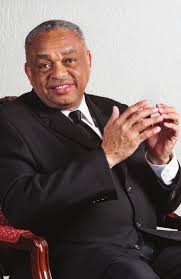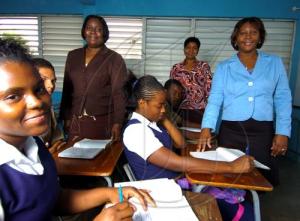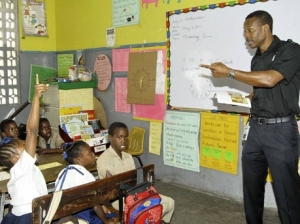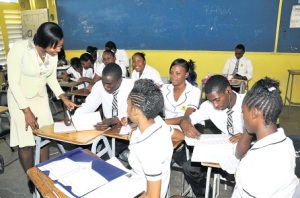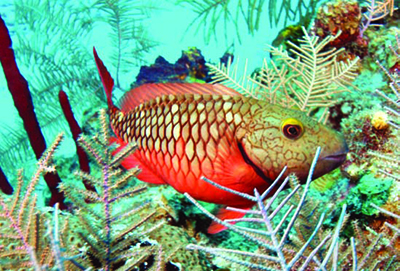 KINGSTON: Nov 2016 [MONA News}: The leadership of The University of the West Indies, Mona Campus, is on a mission to make this the region’s most modern and sought-after institution, using a development model which could become the go-to for other campuses and institutions.
KINGSTON: Nov 2016 [MONA News}: The leadership of The University of the West Indies, Mona Campus, is on a mission to make this the region’s most modern and sought-after institution, using a development model which could become the go-to for other campuses and institutions.
In recent years, there have been several changes: a new medical building, new halls of residence, restaurants and banking facilities. Strapped for cash but determined not to borrow, Mona’s Principal Professor Archibald McDonald and his team are pursuing a series of public/private Partnerships that have breathed new life into the 68 year-old institution.
The slow steady pace of development is being ramped up: old buildings are giving way to new ones, old facilities refreshed and equipment upgraded. The plans are as ambitious as they are optimistic and expensive, but the University is racing full speed ahead. Surprisingly, the institution is not spending a single cent. Speaking with Mona Magazine recently, Professor McDonald outlined a raft of initiatives that aim to reshape the sprawling Mona Campus into an ultra-modern institution offering its students a world-class education in line with corporate needs, the very best in accommodation, student services and comfort.
Mona’s student housing development model is now seen as the standard for cash-strapped colleges and institutions, and is to be rolled out across the entire UWI system. Who would have known that a rather contentious induction speech just over three years ago would result in a prolific and rewarding relationship between the Mona Campus and the private sector.
“During my induction speech I noted that governments over the years had not done enough for the University… and I challenged the private sector to do more. It has paid off,” Professor McDonald said with a chuckle. He noted that the “relationship between the private sector and the university has never been closer”. On one hand, UWI is getting what it needs in development: technological and industry support through several Memoranda of Understanding (MOUs) and Private/Public Partnerships, while the investors salve their corporate responsibility needs and makes a profit.
A partnership between The UWI, Mona and 138 Student Living – a subsidiary of K-Limited – to refurbish, remodel and operate its halls of residence, has revolutionised the management of student housing. Irvine Hall is being refurbished, demolishing some of the old buildings to make way for new ones, adding another 1,100 rooms to bring world-class accommodation and ‘home comforts’ to campus living. And this is only the beginning.
The agreement for the construction of 1,584 houses at a cost of $4 billion over three years should increase the number of rooms on the Mona Campus to about 6,000. The first 480 units have already been delivered, 500 will be handed over soon and the balance, scheduled for handover in 2017. This makes the University the largest single owner of ‘hotel’ rooms on the island.
“Because of the cash flow problems we have not been able to maintain the facilities properly, so outsourcing gives us the opportunity to do the renovations which are necessary and have world-class accommodation for our students,” Professor McDonald explained.
New housing is only one component of the overall strategy to increase revenues, Mona’s principal continued: “We are trying to increase the number of international students. It has been slow, but what we have done is to attract more regional students especially from Trinidad and Tobago. Whenever you bring students from outside of Jamaica, you need to provide accommodation for them”.
K Limited and UWI’s other partners will recover their investments from the savings and earnings. Ambitious as this is, it is only the tip of the iceberg.
The next three to five years will see major changes on Campus, among them the conversion of the 15-room Mona Visitors’ Lodge & Conference Centre into a 150-room hotel; and the development of College Common. Replacing the Mona Visitors’ Lodge will improve the offerings at what is already a “very nice place for weddings” to provide modern conference facilities and a one-of-a-kind wedding location.
Over at College Common, the UWI-owned residential property, things are about to change. The 100-acre property which is currently home to some of the University’s senior academic and adminstrative staff, is a laid-back community of colonial-style homes on up to an acre of land. Its current layout makes it difficult to secure and maintain, Professor McDonald said, noting: “College Common has been there for 60-odd years, it is exactly as the British left it, only it is much worse as the houses are in disrepair.”
A mix of town houses, apartments and up-scale homes, some of which will be offered as high-end rentals to companies and Embassies, will replace the run-down old houses, provide staff with updated facilities and the university with much-needed revenue to continue funding the extensive development plans that are being rolled out.
There is no doubt this project could reap big benefits. After all, the Mona Campus sits on some prime lands, in a coveted zip code. And pulling everything together, an ultra-modern Campus/Student centre housing a modern auditorium for university functions including the annual graduation exercise, the housing of the students’ union, a place where students meet, study or just hang out. In addition to the coffee shops, meeting and reading rooms, the centre is expected to be a hub of activity for the 18,000 students on roll.
But plans would not be complete without an adequate supply of water and cost-effective energy. In fact, the co–generation plant that is already cooling several of the buildings on campus will also provide electricity. Once completed, the plant is expected to only reduce the campus’ dependence on the national grid, and slash energy costs by as much as 50 percent – that translates to roughly $50 million dollars in monthly savings.
In addition, the University’s well-publicised water woes are about to disappear. A new well providing 750,000 gallons a day will more than satisfy the campus’ 500,000-gallon daily requirement, saving an additional $20 million in water charges. With all these coming together, Professor McDonald is delighted.
“If you were to look at our audited statements we would not be able to afford all of this,” he said. But the private/public partnership agreements have allowed the University to improve campus facilities and the value of the services on offer.
“I see this as a new model for the funding of tertiary education,” McDonald said, noting that institutions need money to stay competitive amidst growing competition.
And how much will all this development cost? On the conservative side, more than US$2 billion. What is important, however, is that The University will not spend ‘one red cent’, as the saying goes. As Professor McDonald puts it, Corporate Jamaica is finally seeing the value of partnering with the institution.
The benefits are mutual, ranging from product design, development and testing to skills transfer, professional development and income generation; and for students, industry-specific training, internships and scholarships.
Investors including local corporations like the Jamaica Public Service, the French giant Total, and US marijuana company CITIVA, all fund projects that improve their products and outputs, and add to their bottom line. And the improvements to the Mona Campus are not all.
Over at the University Hospital of the West Indies, in addition to the installation of a fully computerised medical filing system, slated for completion early next year, architectural designs for a major rebuilding project are on the ‘drawing board’. Several buildings will be demolished and replaced, Professor McDonald said.
This year, as the University prepares to begin clinical trials of marijuana extracts to treat epilepsy in children and chronic pain; the expansion and relocation of the Western Jamaica Medical Campus has begun and negotiations are underway for the construction of a modern medical facility on the site of the new campus to take advantage of the growing medical tourism market.
Even so, The UWI Mona continues to look for ways to leverage the many opportunities available, with entrepreneurs with the acumen and fortitude to take up the challenges. Take the Usain Bolt Track for instance. There are plans for a gym and winter sports centre around the state-of-the art running track.
“We just need someone to manage the process, but then that might be for my successor,” Professor McDonald said thoughtfully.
And there are so many things to do. With world-class athletes and universities lining up to experience the training that made the ‘Big Man’ a legend – and the opportunities presented by an Olympic-sized swimming pool –Mona’s standing as the home of the athlete dubbed the ‘Living Legend” is destined to soar.
-Zadie Neufville

